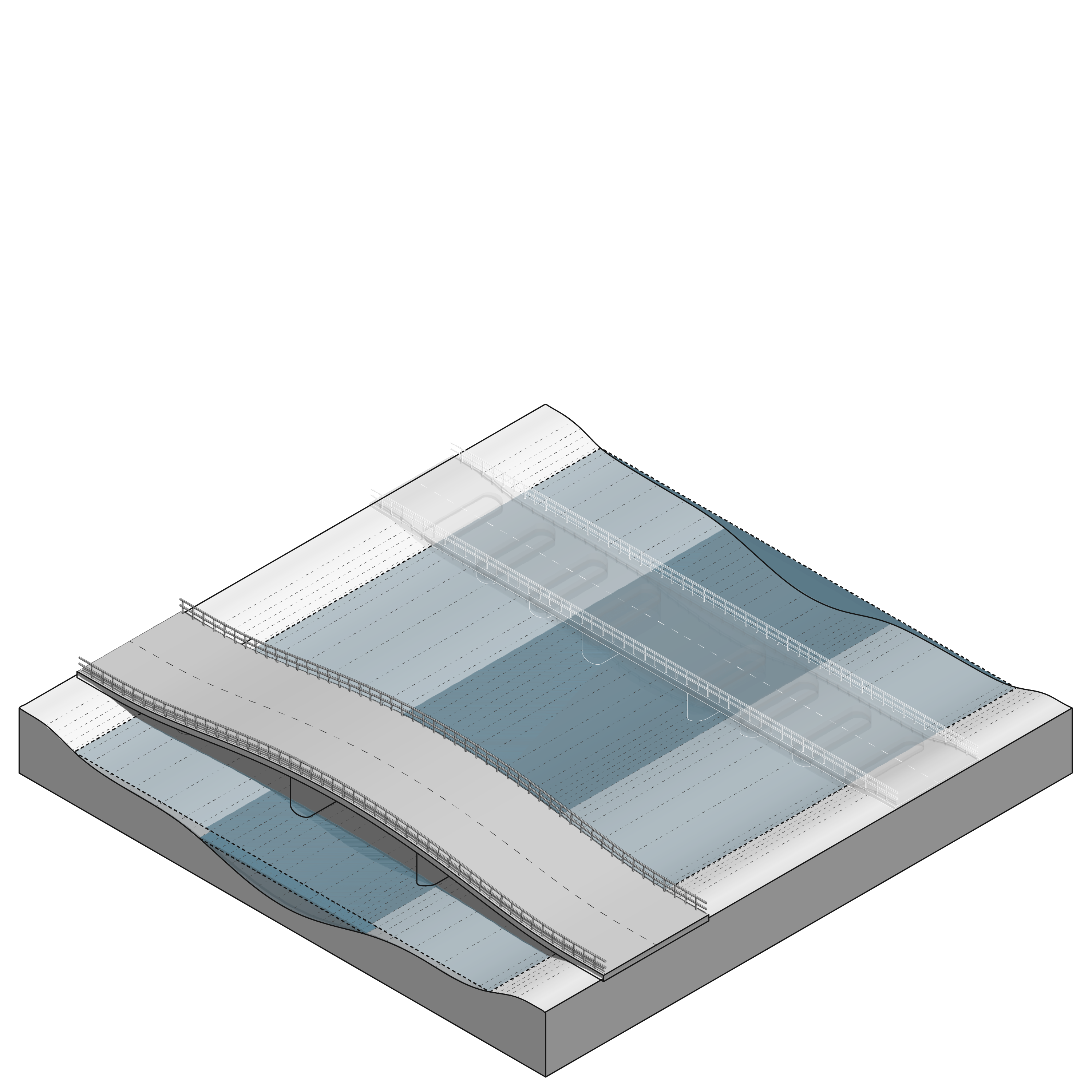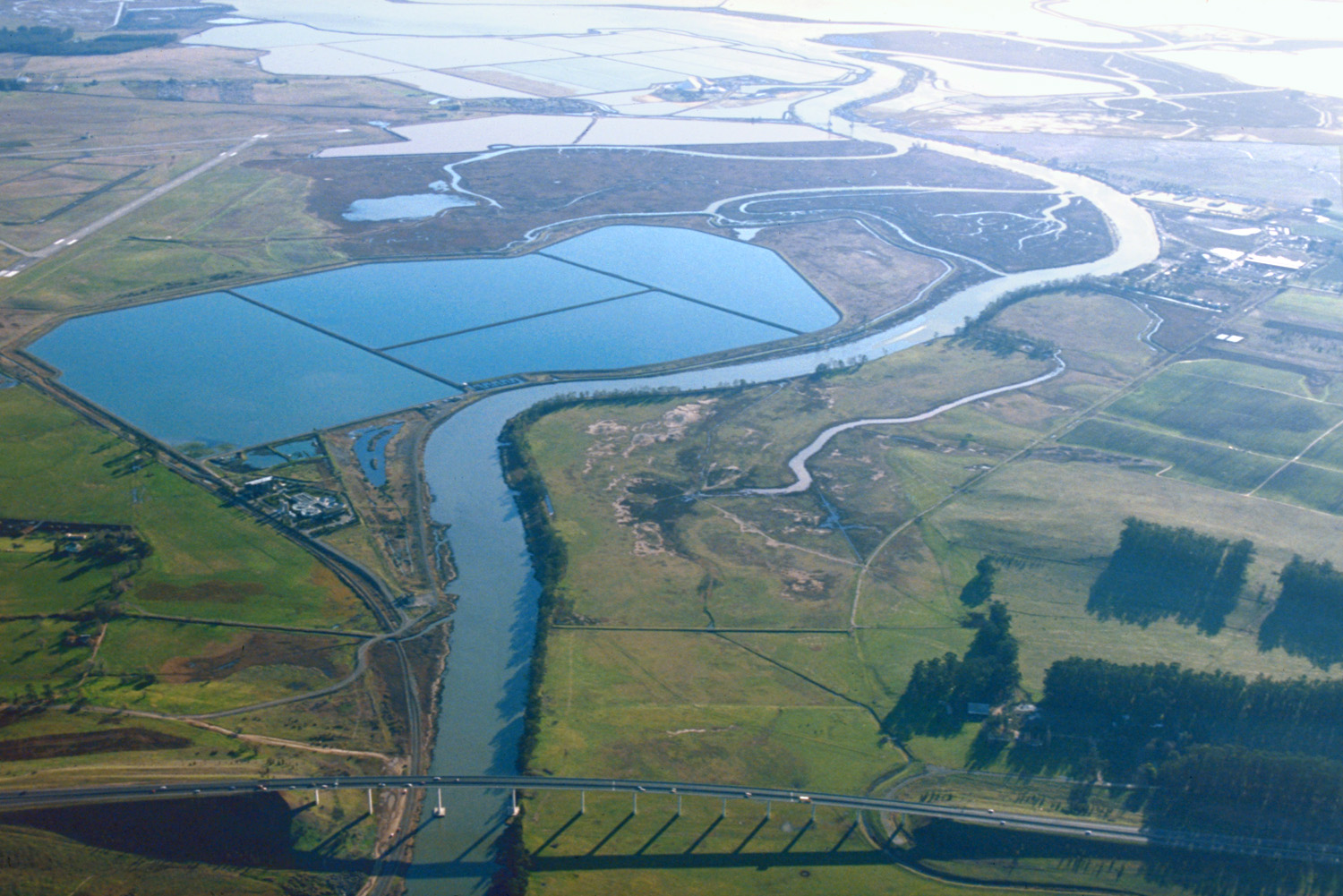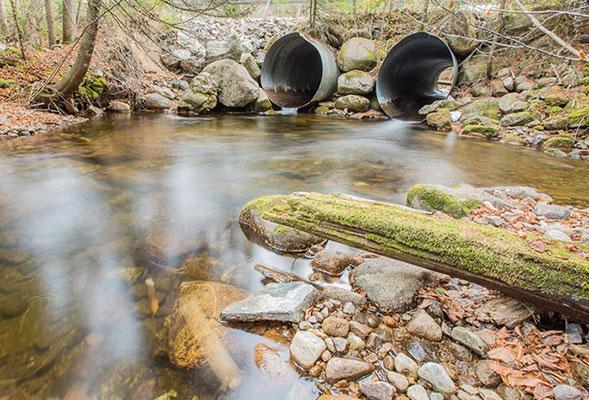Flood Friendly Culverts
Culverts are essential pieces of infrastructure that allow water – whether from rivers and streams, tidal inlets, or storm events – to pass underneath a bridge, road or railway without disrupting the flow of traffic. Many of these pieces of critical infrastructure were designed and installed many years ago and may no longer adequately accommodate the movement of floodwaters and debris necessary during current storm events. Additionally, even in cases where culverts can manage high floodwaters, overly narrow culverts may increase the velocity of water moving underneath roadways, thus increasing downstream erosion in some river systems.
Whether simply out dated or inadequately designed, culverts can become pinch points during storm events and, potentially, result in flooding of adjacent areas or significant impacts to the transportation system. Therefore, identifying undersized road and rail crossings, updating design standards to account for increased water flow, and replacing outdated or inadequate crossings results in less disruption to the transportation system and a reduction in flood impacts on neighboring properties.
Hazard Mitigation
Adequately designed and positioned culverts can reduce flooding on adjacent properties by having the capacity to move large volumes of water through the system, preventing any backup of floodwater and spillover onto adjacent properties. They will also pass waters through the system at a reasonable speed, reducing the potential impact of downstream erosion from high velocity waters.
Siting Considerations
The basic process for addressing undersized culverts is to: (1) assess vulnerable road crossings, (2) prioritize problem areas, and (3) upgrade.
There are a number of tools and approaches available to assess the vulnerability of road crossings. The simplest approach is often direct outreach to staff responsible for managing transportation systems, whether at the municipal, state, or federal level. These staff will often be able to provide data on road crossings and may also be able to provide direct guidance on where recurring flooding is and has been an issue.
Costs
Culvert and bridge replacement costs vary by location and circumstance, however upgrading this infrastructure can be more expensive than replacing it in kind from a materials and labor standpoint. That said, undersized road crossings require more frequent maintenance and replacement than upgraded designs. Accordingly, when maintenance and replacement are factored in, the average annual cost of an upgraded correctly sized culvert can be lower over its life time than that of an undersized culvert over the same time frame. A study by the Massachusetts Department of Fish and Game found that upgrading a series of culverts was 38% less expensive over a 30 year time frame than replacing and maintaining the existing undersized culverts.
Co-Benefits of the Strategy
In addition to improving the resilience of transportation infrastructure, improving the flow of water through culverts has tremendous ecological benefits, both in the restoration of habitat and in the reconnection of rivers for migratory species. Recreational migratory fish species – trout, salmon, and others – are especially reliant on having access to the headwaters of rivers and streams for reproduction and juvenile stages of their life cycle. By reconnecting waterways, not only do these species benefit from it, but the associated outdoor recreation economy associated with them – worth over $56 million in the eight counties that make up the Adirondacks in 2007 – benefit through the improved health and resilience of the fishery.
Maintenance Considerations
Both undersized and upgraded culverts require regular maintenance. However undersized culverts are more prone to cause scour and erosion and may regularly flood impacting the resilience of the road or bridge resulting in the need for additional maintenance. Upgraded culverts will still need to be inspected for debris removal and to check the structural integrity of the culvert such as the headwalls and pipe to ensure it is intact.
Similar or Complementary Solutions
Reducing the limitations associated with the flow of water through culverts or bridges, and restoring a more natural flood regime, can provide significant benefits for floodplain or coastal restoration, especially as it relates to the health of wetlands in either area.
Additional Considerations
Most culvert or bridge upgrades will require a permit from the United States Army Corps of Engineers, though the permit will likely fall under the Maintenance category of the current nationwide permits that the Army Corps issues. State and local permits will also likely be necessary for any culvert or bridge upgrades and outreach to the appropriate officials is encouraged.
Additional Resources
The Nature Conservancy created the Climate Smart Culverts Toolkit, which–while originally focused on the North Atlantic–is relevant elsewhere.
While originally written from a habitat protection perspective, the design guidance created by Massachusetts, New York, and Washington offers good information on addressing stream crossing issues.
The Federal Highway Authority has authored two documents on transportation infrastructure at risk from flood impacts and guidance on how to assess vulnerability and determine best approaches to improve resilience, one focused on the coastal zone and the other focused on riverine areas.
The North Atlantic Aquatic Connectivity Collaborative (NACC) is a network of individuals from universities, conservation organizations, and state and federal natural resource and transportation departments focused on improving aquatic connectivity across a 13-state region, from Maine to West Virginia.


